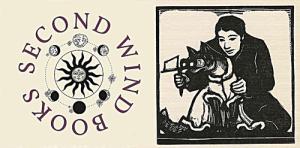Our Bright Young Librarians series continues today with Margaret Gamm, Special Collections Acquisitions and Collection Management Librarian at University of Iowa Libraries:
How did you get started in rare books?
When I was in fifth grade, I went to my first book signing, where I was thrilled to watch J.K. Rowling sign my first printing of Harry Potter and the Sorcerer's Stone (alas, not the Philosopher's Stone). I knew it was special, as did my parents. When I wanted to take it to school with me so that my friends could see it, they ensured that I put it in a Ziploc bag. I gave everybody handling instructions when they wanted to touch it. I guess that counts as early practice for my reading room spiel? Researching the book introduced me to Abebooks and Ebay, which led me down the rabbit hole. Eventually, my undergraduate advisor at the University of Georgia, Professor Frances Teague, suggested an internship at Hargrett Rare Book and Manuscript Library. That sealed the deal.
Where did you earn your MLS?
I graduated with an MSLS and a Concentration in Archives and Records Management from the University of North Carolina, Chapel Hill.
What is your role at your institution?
Amongst other things, I select for, acquire, and manage our rare book, manuscript, and maps collections. You can watch me open boxes of orders and gifts
on our Vine. I also run
the Map Collection tumblr.
Favorite rare book / ephemera that you've handled?
My current favorite items in Iowa's collections are our medieval manuscripts (digitized versions can be seen
here). I find something new to me every time I look at them. During a recent class, I noticed a map in the margins of our 1465 Pharsalia manuscript, which I suspect is the oldest map in our collection. The collection that has had the most lasting effect on me is the
Heralds of Science, which is located at the Dibner Library of the History of Science and Technology at the Smithsonian. I transcribed copy specific information for each of the books during the course of an internship there. Working my way through that collection gave me a tremendous appreciation of scientific books and the history of science.
What do you personally collect?
I collect for the institution, so I tend to stay away from too much personal collecting. I have a few signed first printings from my favorite authors, and I would like to collect 19th century fashion images.
What do you like to do outside of work?
I enjoy disc golfing and attending weekly trivia with an ever-increasing number of librarians.
What excites you about rare book librarianship?
Everything! There is always something to explore, something to share, and somebody to share it with. I can spend one day focusing on bindings, the next day looking at scrolls, and the next day looking at typography. The topics discussed in our shared office each day might include 20th century science fiction or a 15th century palimpsest. I just returned from Rare Book School, which I knew would be great, but which still surpassed my expectations. It was invigorating to be around so many people who share the same sort of passion.
Thoughts on the future of special collections / rare book librarianship?
Special collections are becoming increasingly available to the public and interest is growing in leaps and bounds, which is quite thrilling. Space will always be a problem, whether digital or physical, but the material going into that space is wonderful, and increasingly diverse. My special collections colleagues (at Iowa and around the world) continue to amaze me with their passion and dedication, and are the biggest reason special collections is such an exciting place to be. Overall, I cannot wait to see where we are heading.
Any unusual or interesting collection at your library you'd like to draw our attention to?
There are so many that it's hard to pick just one.
Colleen Theisen highlighted a few when she answered this question two years ago, but there are many more. One is the Szathmary Culinary Collection, which continues to grow as donations and purchases come in. I have focused on manuscript cookbooks in recent additions to the collection. Those can be a lot of fun. If you need a remedy for canine distemper, you can find it right next to the ingredients for a scent jar and a recipe for apple jelly. I am also partial to the Map Collection since it was the first one I worked with here, and it never gets enough love from researchers. There is a lot of untapped potential there for exciting and fresh research.
Any upcoming exhibitions at your library?
This Fall Special Collections is partnering with the University of Iowa Center for the Book and the John Martin Rare Book Room to host Micrographia: Book Art Responses to Early Modern Scientific Books. The call for interest closed at the beginning of July, so now we are looking forward to seeing what the book artists come up with. We also have several exhibits planned in anticipation of the grand opening of our shared exhibit space on the first floor of the library. One of them is First Folio! The Book that Gave Us Shakespeare, which is coming our way in Fall of 2016.

















